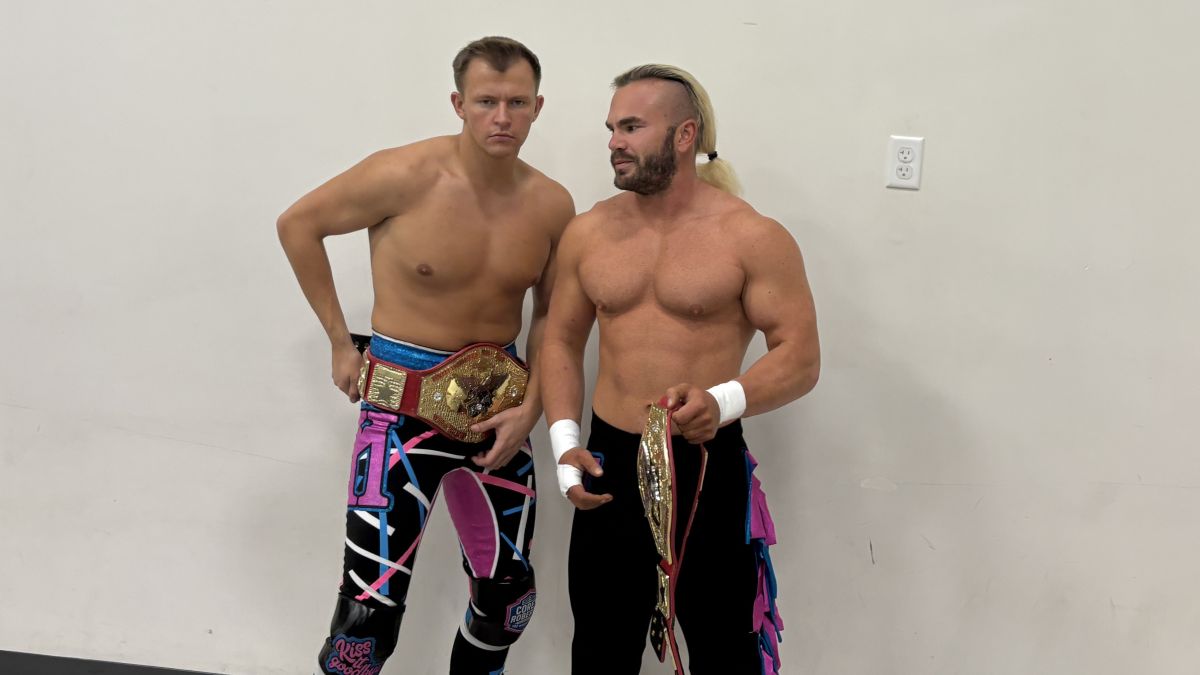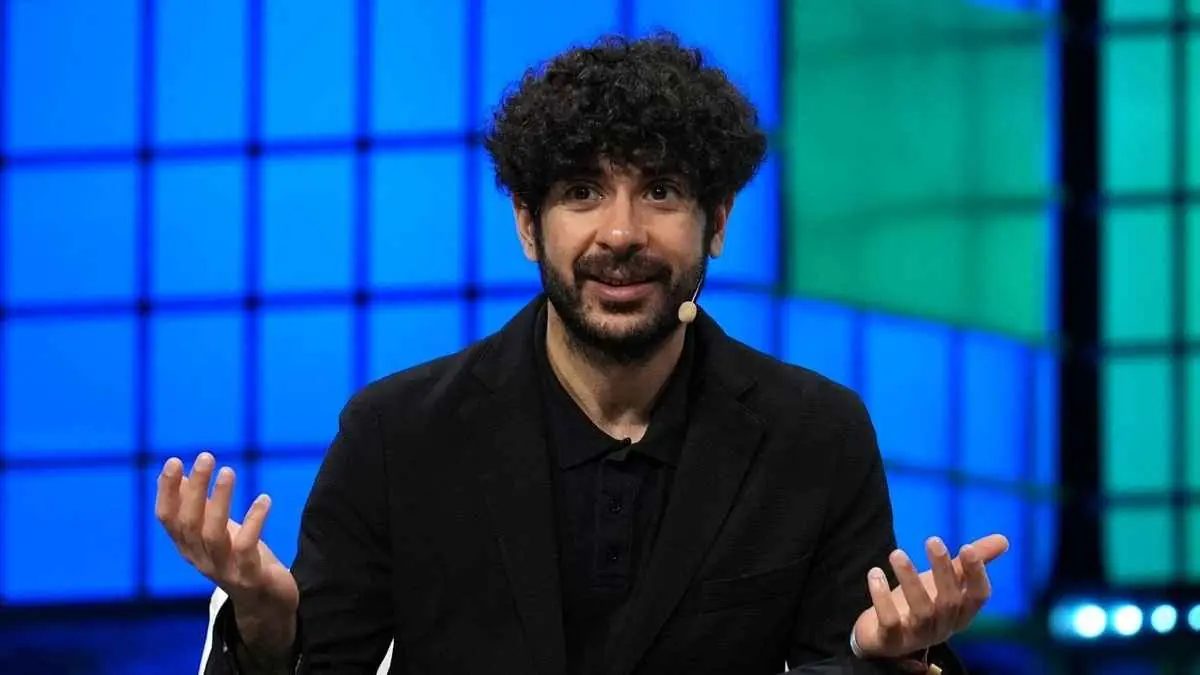“I hope we all get out that easy,” Ed Wiskoski recently told SLAM! Wrestling while reflecting on the death of “Playboy” Buddy Rose. “That’s one good thing to say — he didn’t suffer.”

Rose died two months ago at his home in Vancouver, Wash. His wife, Tammy, found him unresponsive in his favourite chair in front of the TV. He was 56.
While the wrestling world lost a consummate heel respected for his abilities both in the ring and on the microphone, Wiskoski — a.k.a. Colonel DeBeers in the AWA — lost a good friend.
“When you think back on Buddy, you just gotta laugh,” Wiskoski chuckled from his home in Portland, Oregon. “He was a funny person in the ring, and he was such a funny person out of the ring.”
Most of Buddy’s humour, it seems, was of the low-brow variety. Wiskoski launched into a favourite tale:
“One story that comes to mind involves Curt Hennig. When Buddy got big, Curt would always refer to (Buddy’s) ass as the ‘bat cave.’ Buddy would be walking around the dressing room naked, and Curt would say, ‘Hey Buddy, show ’em the bat cave,’ then Buddy would bend over and show everybody his butthole.
“We were in a hotel in Salt Lake City this one time and there was a kid named Peterson — Maxx Payne was his ring name — and Buddy Wayne told Buddy (Rose) to, ‘Show him the bat cave.’ And of course, Buddy gets on and his hands and knees and he’s reared up and basically doing kind of a half-headstand, spreadin’ those cheeks and showin’ it to Peterson. Well, Peterson grabs a beer bottle and sticks it right up Buddy’s butthole. But Buddy was so big, that he couldn’t do anything but roll forward and of course when he did that, that bottle drove half way up his ass! My God, there’s so many funny things that Buddy did.”
Wiskoski and Rose first met in 1975, working a match together in Kansas City, Mo. “He came in out of Minnesota to do a week of jobs for television and house shows,” said Wiskoski. “It was such a pleasure to work with someone like Buddy, who was on the lower end, but who could really work. He was in and out in a week, but it was later in Portland when we became (tag team) partners and friends.”
As a famous tag team across the West Coast, Wiskoski and Rose held the Pacific Northwest Tag Team titles on several occasions, along with the NWA World Tag Team Titles (San Francisco version). “Some of the matches were just absolutely great, tag teaming with Buddy,” said Wiskoski. “Buddy was a true performer, and the most memorable match for me was in Denver, Colorado. It was me and Buddy vs. The Rockers, Jannetty and Michaels, and we did a 30-minute Broadway. For the last 10 minutes we had the people standing and going absolutely nuts.”
Those matches, Wiskoski said, were a precursor for things to come as Rose would capture the AWA World Tag Team titles with “Pretty Boy” Doug Somers. The bleached-blonde duo, managed by Sherri Martel, reigned at a time when the AWA was shown on ESPN across the United States. Their year-long wild and bloody feud with The Midnight Rockers is still talked about today, and found on several WWE-produced DVDs.
“Buddy was the leader, he was the ring general for that particular tag team,” said Wiskoski. “Doug was just happy to be along for the ride — no disrespect to Doug — ’cause they had a heck of program going on, with some fantastic and memorable matches. You gotta understand, at that time, both Shawn (Michaels) and Marty (Jannetty) weren’t exactly ring veterans, so it was Buddy directing traffic during those matches and the other three were participants involved.”
Before Rose found fame and fortune in the AWA, he was a successful singles competitor in the WWF, main-eventing Madison Square Garden on several occasions facing Bob Backlund, Pedro Morales, and Jimmy “Superfly” Snuka. From 1985 to 1990, Wiskoski would become best known as the nefarious racist, Colonel DeBeers, feuding with Scott Hall, Jimmy Snuka, and Sgt. Slaughter in the AWA.

Over the next two decades, Wiskoski and Rose remained friends and would meet up working for various wrestling organizations, living parallel lives along the way, and together opened a wrestling school in Portland after Rose retired from wrestling. “(Rose) wasn’t able to get in the ring and do all that much, simply because of his size and health, but he could pretty much manage the whole thing from the floor,” Wiskoski said of their time running the wrestling school.
“Our school was different than most. I think a lot of these (wrestling) schools out there, their purpose is to get money up front from people then try to discourage them to quit. And that wasn’t our philosophy at all. We told (our students) that they’re here to learn how to work. We gave them drills and recommended they hit the gym and get on a weight program, but we didn’t tell anybody they had to. Buddy always pointed out, ‘I’ve never been to the gym and I still made money.’ That was our philosophy, and to this day, the best workers around here came out of our school — the guys who can truly put on a show and work.”
Rose came out of retirement and worked for the last time at WrestleReunion 2005 in Tampa, Florida. In a six-man tag team match he teamed with Col. DeBeers, and Bob Orton Jr. against Jimmy Valiant, Snuka, and Roddy Piper. “That was Buddy’s last match,” remembers Wiskoski. “I remember he had gotten so big he had to borrow somebody’s tights, and of course, Buddy didn’t try them on before hand and he couldn’t get into them. He borrowed them from a guy named Eddie Moretti, who was a big guy, but not as big as Buddy.
“So Buddy had to go out and wrestle in a t-shirt and sweat pants, which is what he normally wears to go out anyways. Buddy got in there and did what he could, and it was a good match and a great turnout. But I think these reunion shows have run their course now. My phone’s not ringing anyway.”
Just before this year’s Cauliflower Alley Club (CAC) reunion in Las Vegas, Wiskoski and Rose spoke on the phone for the last time. “That was the last time me and Buddy talked,” Wiskoski said, choking back tears. “He called and asked me about my knees — I need a replacement — and I told him I get by as long as I take a couple ibuprofen in the morning. He said, ‘Yeah, it’s getting to be a bitch with my diabetic numbers,’ and he said, ‘Listen, do you want to go to the CAC?’ Buddy wanted to drive, and I wanted to fly, and it didn’t work out.”
Wiskoski said one of his favourite memories is being honoured by the Cauliflower Alley Club along with his friend Rose several years back. The CAC is not a wrestling “Hall of Fame,” Wiskoski pointed out, but rather a non-profit fraternal operation. “Both Buddy and I agreed on one thing, that everybody should be in the ‘Hall of Fame,'” he said.
“I mean, this is a worked sport — it’s not a shoot. So the guys that did jobs all the time should be in there with Hulk Hogan and everybody else, because those guys couldn’t have done it alone. Buddy and I agreed, anywhere Hogan went, to whatever arena, there had to be an opposing evil — there’s God, and then there’s the devil. And that was our feeling on ‘Hall of Fames,’ and those kinds of awards — because they’re bogus. We don’t put much credence in inducting big talents without acknowledging the enhancement crew. I wouldn’t be surprised if (WWE) puts Mr.T in (their Hall of Fame) someday.”
While speaking of Mr.T, Wiskoski shared this interesting factoid: “You know whose idea that was, the Mr.T boxing Roddy Piper (at WrestleMania II)? That was Buddy Rose’s idea,” said Wiskoski. “He had approached Piper and he said to him, ‘Piper, I’ll tell ya what. You’ve got some boxing experience and this Mr.T does, so why don’t we set something up where you box him.’ This was brought up outside of the WWF, and lo and behold over one year later, Piper took the idea and presented it to Vince and Vince ran with it.
“I’m sure Piper got a nice pay-off, and I think the nice thing to do would have been for (Piper) to at least shove some (money) Buddy’s way and say thanks for the idea. It never happened. That match was the Playboy’s idea — and that’s a true story.”

Wiskoski shared other “believe it or not” stories while reflecting on the life of Rose, like the times he beat the athletic Rick Martel in a foot race, more than once. “A lot of people didn’t realize how fast Buddy was — we’re talkin’ really, really fast,” said Wiskoski. “I’m talkin’ about foot speed. He was a hockey player, baseball player and all-round athlete, and even when he got bigger, he and Martel would have these foot races and sometimes Martel would win, and sometimes Buddy would win. People didn’t know how quick he was, and he had a great deal of speed in the ring as well.
“It was clear the WWF thought enough of him, and his abilities, to put (Rose) in that very important first match at WrestleMania as The Executioner. And he delivered.
“I could tell you so many stories, so many funny moments that I’ll always remember. My God, so many road stories and times when you’d hear somebody say, ‘Hey, remember when Buddy…'”
Wiskoski said there was no funeral service for Rose. “I really don’t think he would have wanted any kind of memorial, he would have said, ‘Ah, don’t bother spending the money,'” said Wiskoski. “His wife, we only talked one time just after he died and she asked me what I thought Buddy would have wanted and I said that I think Buddy would have just wanted to be cremated. She said, ‘Yeah, that’s what he told me as well.’
“But I’ll tell ya, Buddy’s matches, the blow-away diets, his legacy — it will live on in the minds of fans. And for me, when I think back on Buddy, I just gotta laugh.”
BUDDY ROSE STORIES
- May 4, 2009: Mat Matters: My personal memories of Buddy Rose
- Apr. 29, 2009: ‘Playboy’ Buddy Rose dies
- March 9, 2009: Santana & Rose reflect on Wrestlemania’s debut bout
- Apr. 12, 2004: Doggone it – Buddy Rose to be honored
ED WISKOSKI STORIES
- Jan. 27, 2025: Mat Matters: Me, Kurt and The Colonel
- Jan. 26, 2025: ‘Colonel DeBeers’ Ed Wiskoski dead at 80
- Apr. 17, 2004: Guest column: Col. DeBeers: It’s an honor to be honored



